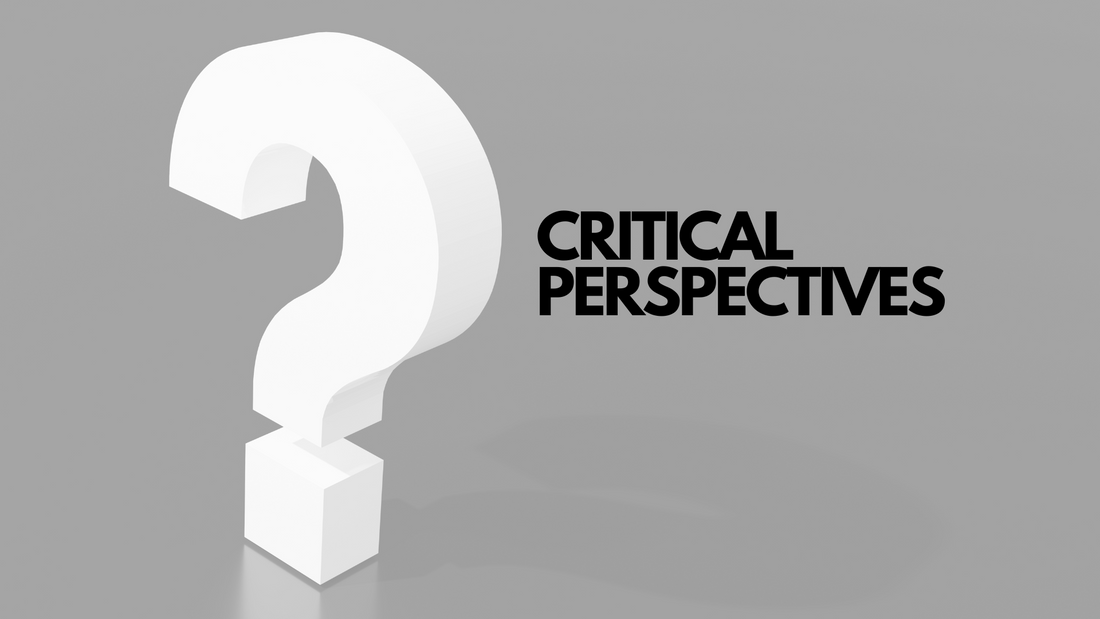
What Are Critical Perspectives?
Share
The importance of different perspectives—especially in analysis and interpretation—lies in how they enrich understanding and foster critical thinking.
______________________________________________________________________________________________________
What Are Critical Perspectives?
Critical perspectives are specific ways or lenses through which we examine, interpret, and evaluate texts, artworks, cultural phenomena, or social issues. Each perspective offers a unique framework or set of questions that help uncover deeper meanings, challenge assumptions, and reveal underlying power dynamics, ideologies, or cultural contexts. It helps to:
- Reveal deeper meanings beyond the surface content.
- Uncover underlying assumptions, values, and ideologies in the work.
- Challenge dominant narratives and highlight marginalized voices or alternative viewpoints.
- Enhance understanding by situating the work in broader social, political, psychological, or cultural contexts.
- Encourage critical thinking by questioning and evaluating the work’s impact, purpose, and significance.
In essence, critical perspectives guide readers or viewers to think more deeply and critically, enriching the interpretation and appreciation of the material.
_______________________________________________________________________________________________________
Here is a brief introduction to 9 critical perspectives used in literary and cultural analysis:
1. Formalist/New Criticism
- Focuses on the text itself—structure, language, style, and literary devices.
- Analyzes how elements like symbolism, imagery, and narrative shape meaning.
- Avoids outside context (author’s biography, history).
2. Historical/Biographical Criticism
- Examines the historical context of the text’s creation.
- Considers the author’s life, times, and cultural background to understand meaning.
- Explores how historical events or social conditions influence the work.
3. Marxist Criticism
- Analyzes class struggle, economic power, and social inequalities depicted in the text.
- Views literature as reflecting or challenging capitalist ideologies.
- Highlights issues of oppression, labor, and commodification.
4. Feminist Criticism
- Investigates gender roles, power dynamics, and representations of women.
- Challenges patriarchal norms and highlights female voices and experiences.
- Explores themes of identity, sexuality, and empowerment.
5. Psychoanalytic Criticism
- Uses theories of Freud, Jung, or Lacan to analyze unconscious desires, fears, and motivations.
- Examines symbols and characters as manifestations of psychological conflicts.
- Studies author’s psyche and reader’s response.
6. Postcolonial Criticism
- Explores the effects of colonization on culture, identity, and power relations.
- Analyzes representations of colonizers and colonized, issues of race, and cultural hybridity.
- Critiques Eurocentric narratives and highlights marginalized voices.
7. Structuralist and Post-Structuralist Criticism
- Structuralism looks for underlying systems, patterns, and binaries in texts.
- Post-structuralism questions fixed meanings and embraces ambiguity and multiple interpretations.
- Examines language, signs, and the instability of meaning.
8. Reader-Response Criticism
- Focuses on the reader’s role in creating meaning.
- Considers how individual backgrounds and experiences influence interpretation.
- Emphasizes subjective responses over authorial intent.
9. Ecocriticism
- Studies literature’s relationship with the environment.
- Explores themes of nature, ecology, and human impact on the planet.
- Advocates for environmental awareness through literary analysis.
